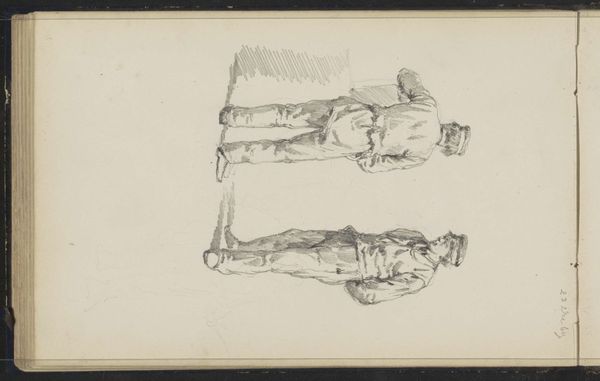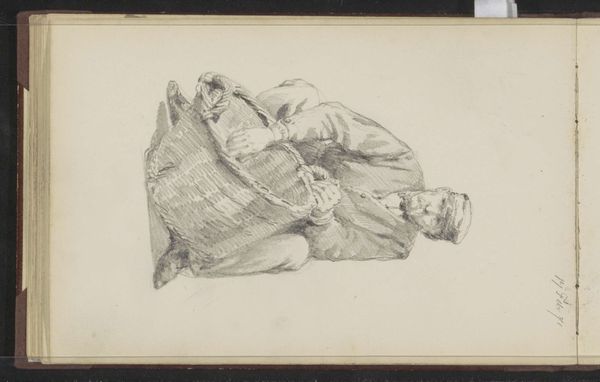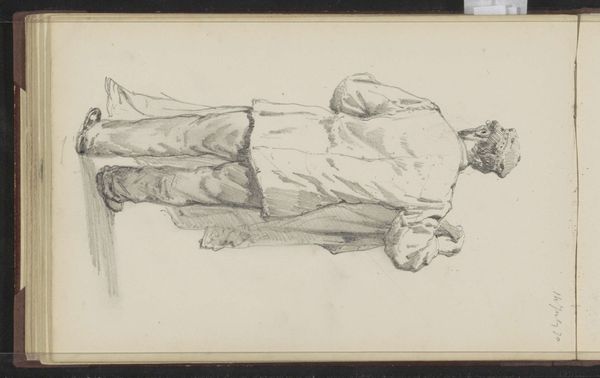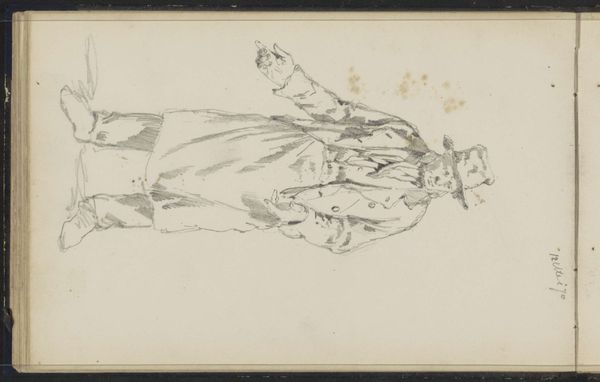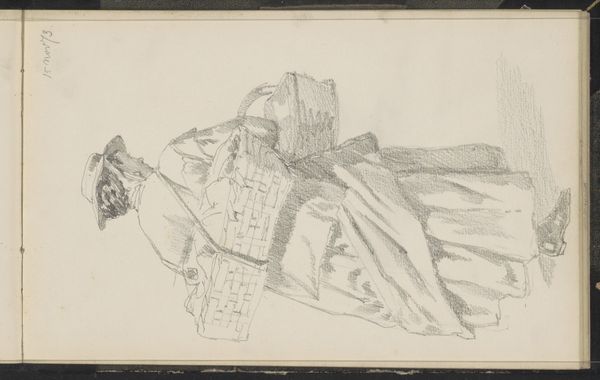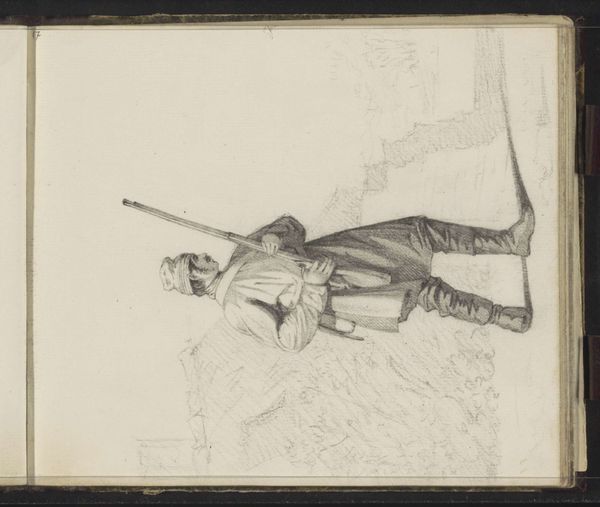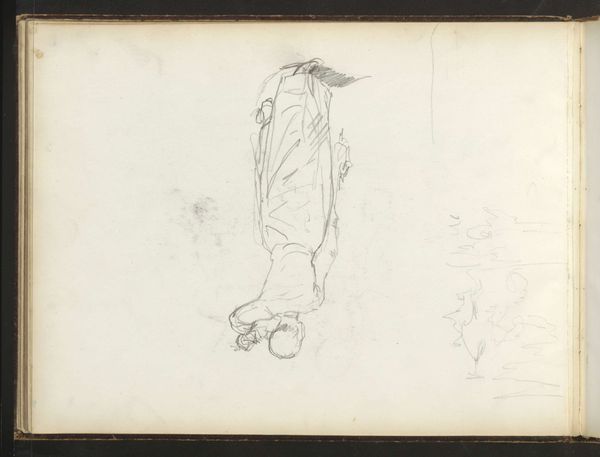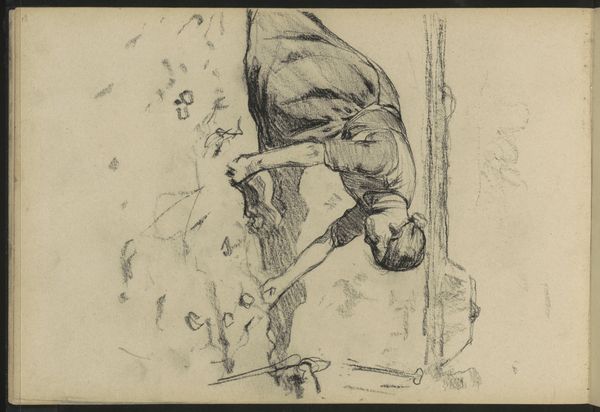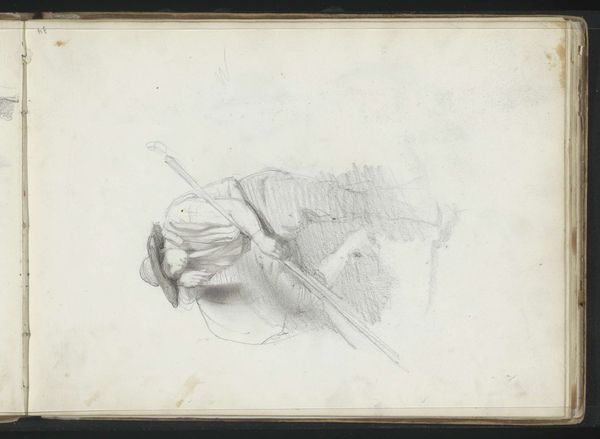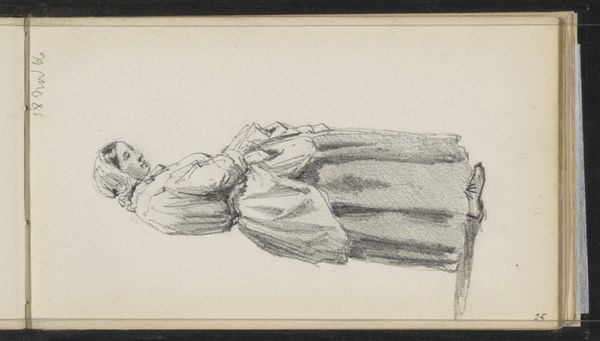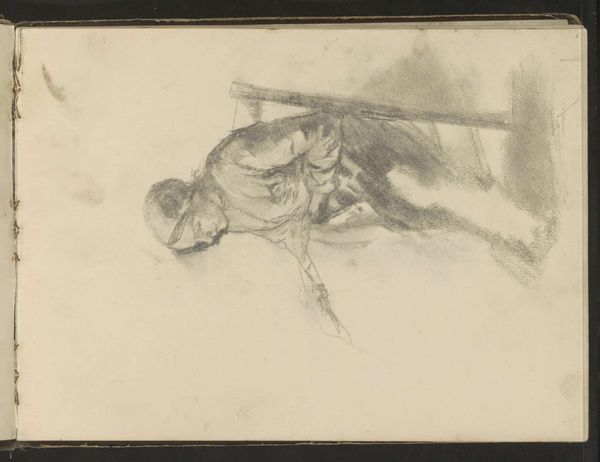
drawing, paper, pencil
#
portrait
#
drawing
#
toned paper
#
pen sketch
#
pencil sketch
#
incomplete sketchy
#
figuration
#
paper
#
personal sketchbook
#
ink drawing experimentation
#
pen-ink sketch
#
pencil
#
sketchbook drawing
#
watercolour illustration
#
genre-painting
#
academic-art
#
sketchbook art
#
realism
Copyright: Rijks Museum: Open Domain
Editor: So, this is Hendrik Abraham Klinkhamer's "Man met een schop," dating from 1820 to 1872. It’s a pencil and pen drawing on paper, housed at the Rijksmuseum. It feels like a very honest, almost journalistic depiction of labor. What's your take on this piece? Curator: Well, considering its era, this drawing offers an interesting glimpse into the representation of labor within art and society. The art world and its institutions were gradually acknowledging different social classes and their presence in the visual landscape. But let's consider - who would have been the audience for such a piece and why might it have been created? Editor: Possibly a preparatory study for a larger work or perhaps an artwork intended to cater the rising middle class seeking realistic representations of everyday life? Curator: Precisely! It reflects the changing patronage of the arts. No longer just the domain of the aristocracy, art was increasingly shaped by the tastes and values of a rising middle class who sought different narratives reflected in their purchases, don't you agree? Do you also notice how the figure, though rendered with realism, also maintains a certain dignity? Editor: I do see that, now that you point it out! There’s an element of respect in how he’s depicted. Curator: Right, because the politics of imagery are complex! Artists could, consciously or unconsciously, either reinforce or challenge social hierarchies through their representations. This simple drawing may speak volumes about how Dutch society perceived and valued manual labor at this time. Editor: That's fascinating! It makes me see the drawing as more than just a simple sketch, but rather a social commentary captured in lines and shading. Thank you! Curator: It’s all about understanding the art as a cultural artifact. Thinking of those dynamics shapes our understanding and appreciation!
Comments
No comments
Be the first to comment and join the conversation on the ultimate creative platform.
